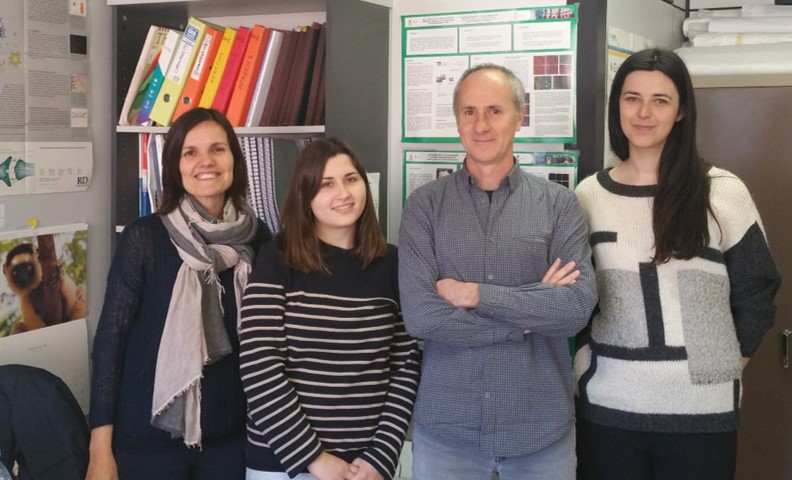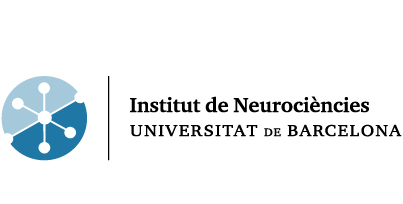
ORCID Research Profile
CARME PELEGRÍ I JORDI VILAPLANA
Position: Tenured University Lecturers
(Professors Titulars d’Universitat)
Research team
Itsaso Cabezon Rodriguez
Early stage researcher
itsaso.cabezon (at) ub.edu
Elisabet Auge Mari
Early stage researcher
eauge (at) ub.edu
Contact details
Dr. Carme Pelegrí
Department of Bioquímica i Fisiologia
Faculty of Pharmacy and Nutrition Sciences, Av. Joan XXIII 27-31
08028 Barcelona (Spain)
00 34 93 4024505
carmepelegri (at) ub.edu
Dr. Jordi Vilaplana
Department of Bioquímica i Fisiologia
Faculty of Pharmacy and Nutrition Sciences, Av. Joan XXIII 27-31
08028 Barcelona (Spain)
00 34 93 4024505
vilaplana (at) ub.edu
Research Interests
Ageing is a significant risk factor of dementia and several other neurodegenerative diseases, which currently affect more than 6 million people in Europe. As the life span increases, this incidence will be greater in the future. Understanding the molecular basis of these brain conditions is important for attaining their prevention and treatment. In mouse brain, ageing leads to the progressive appearance and expansion of degenerative granular structures frequently referred as “PAS granules” because of their positive staining with periodic acid-Schiff (PAS). We have recently reported the presence in these granules of some neo-epitopes which are generated by the degenerative process that leads to the granule formation and could be markers for the immune system surveillance. We have also reported the existence of natural auto-antibodies directed against these neo-epitopes in the plasma of the animals. Natural auto-antibodies are produced spontaneously since the fetal stage, without previous contact with external antigens. The repertoire of the natural antibodies and their reactivity pattern have been determined through evolution, being remarkably stable within species and even between species. Accordingly, we have also found that the natural antibodies directed against the granule neo-epitopes are present in serum or plasma of other species than mice, as rabbit and goat, as well as humans.
In the same way as PAS granules do in mouse brain, corpora amylacea appear with age in human brains and are profuse in selected brain areas in several neurodegenerative conditions. They are structures of unknown origin and function that are constituted of glucose polymers and may contain waste elements derived from different cell types. We reported that corpora amylacea also present some neo-epitopes that can be recognized by natural antibodies, and we hypothesized that corpora amylacea can be waste containers in which deleterious or residual products are isolated to be later eliminated through the action of the innate immune system. The presence of neo-epitopes on both PAS granules and corpora amylacea, and probably on some other polyglucosan bodies, and the existence of natural antibodies directed against them become a new focal point for the study of both age-related and degenerative brain processes.
Current Research Lines
- Study of the presence of neo-epitopes on pathological granular structures formed in brains from aged mice and study and characterization of natural antibodies directed against them
- Study of the presence of neo-epitopes on human brain corpora amylacea and other polyglucosan bodies and study and characterization of natural antibodies directed against them
- Study of the interaction between the natural immune system and the pathological polyglucosan bodies
- Vehiculation of substances across blood-brain barrier
Highlighted publications
· Augé E, Cabezón I, Pelegrí C, Vilaplana J. (2017) New perspectives on corpora amylacea in the human brain. Sci. Rep. 7, 41807; doi: 10.1038/srep41807 . http://www.nature.com/articles/srep41807
· Manich G, Cabezón I, Augé E, Pelegrí C, Vilaplana J (2016). Periodic acid-Schiff granules in the brain of aged mice: From amyloid aggregates to degenerative structures containing neo-epitopes. Ageing Research Reviews 27: 42-55.
· Manich G, Augé E, Cabezón I, Pallàs M, Vilaplana J, Pelegrí C (2015). Neo-epitopes emerging in the degenerative hippocampal granules of aged mice can be recognized by natural IgM autoantibodies. Immunity and Ageing 12:23.
· Cabezón I, Manich G, Martín-Venegas R, Camins A, Pelegrí C, Vilaplana J (2015). Trafficking of gold nanoparticles coated with the 8D3 anti-transferrin receptor antibody at the mouse blood-brain barrier. Molecular Pharmaceutics 12: 4137-4145.
· Manich G, Cabezón I, Camins A, Pallàs M, Liberski PP, Vilaplana J, Pelegrí C (2014). Clustered granules present in the hippocampus of aged mice result from a degenerative process affecting astrocytes and their surrounding neuropil. Age 36: 9690.



